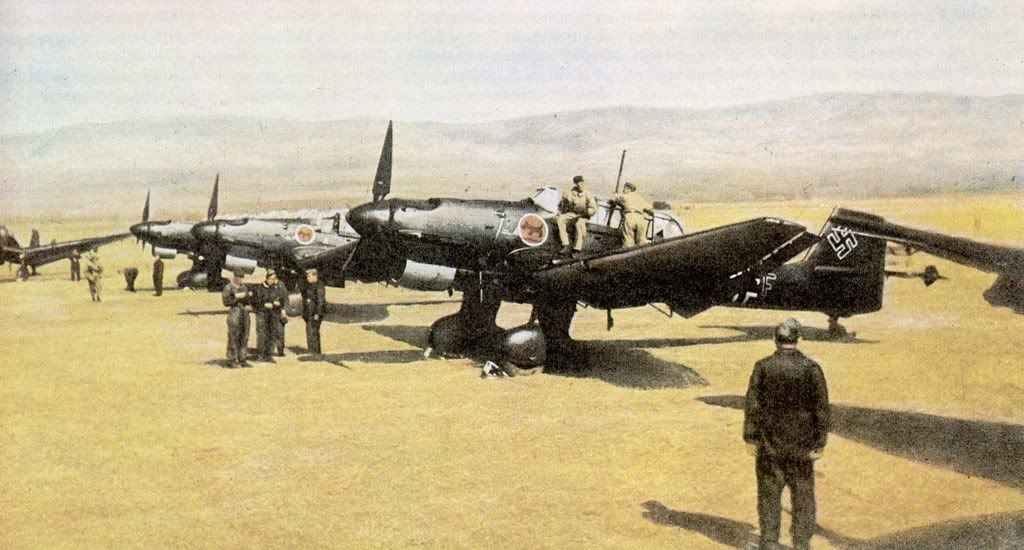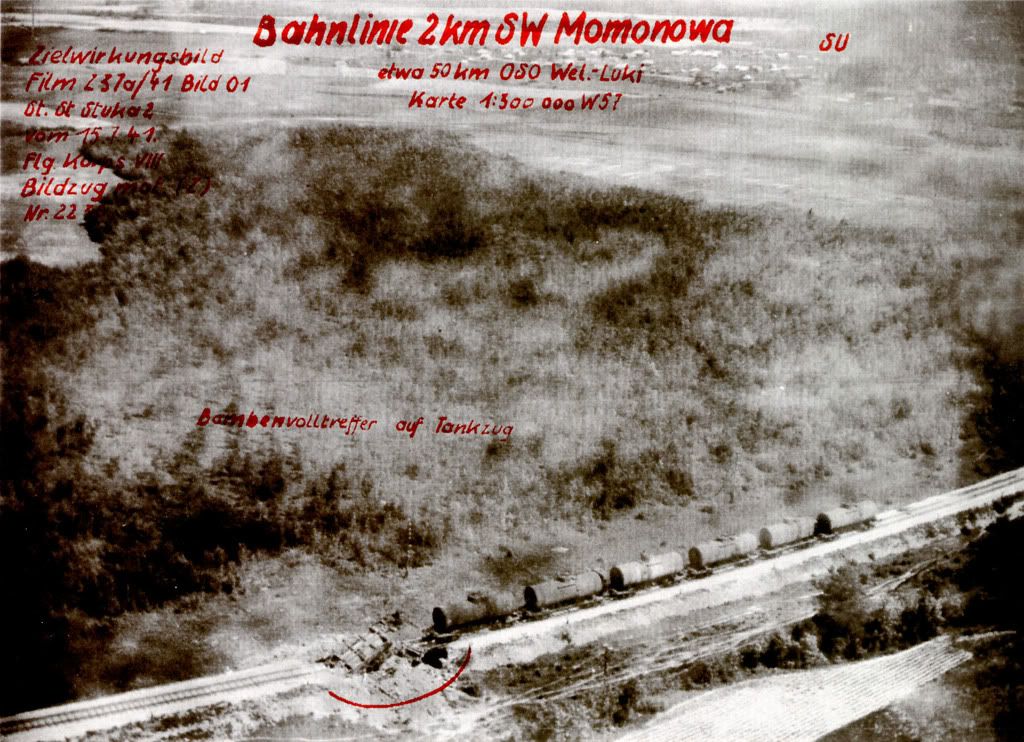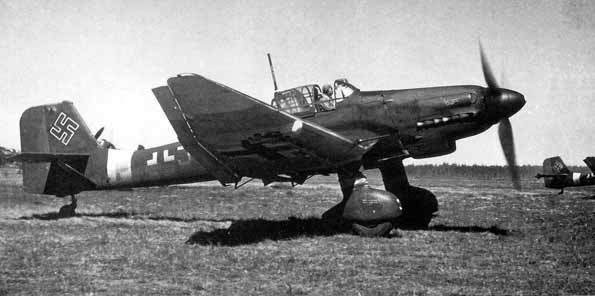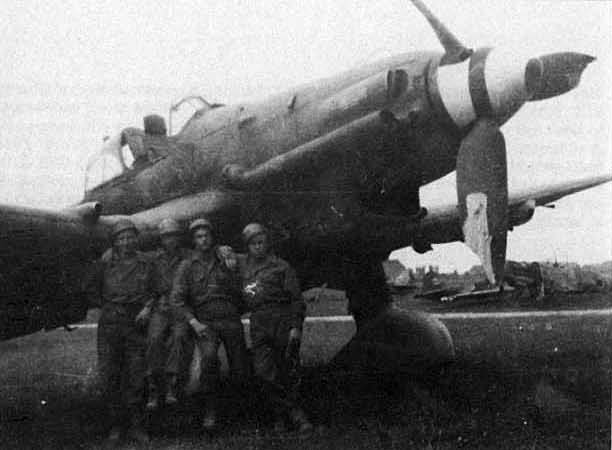Magnificent photos, my dear Mr. Panzerknacker! Thank you very much indeed – these descriptive captions are absolutely unique certificatory artifacts. Well done!
And here are some results of my recent factographic research. Perhaps you can call them – forgotten Ju 87 basics.
Firstly a cut-away portrait of Ju 87 from 1943:
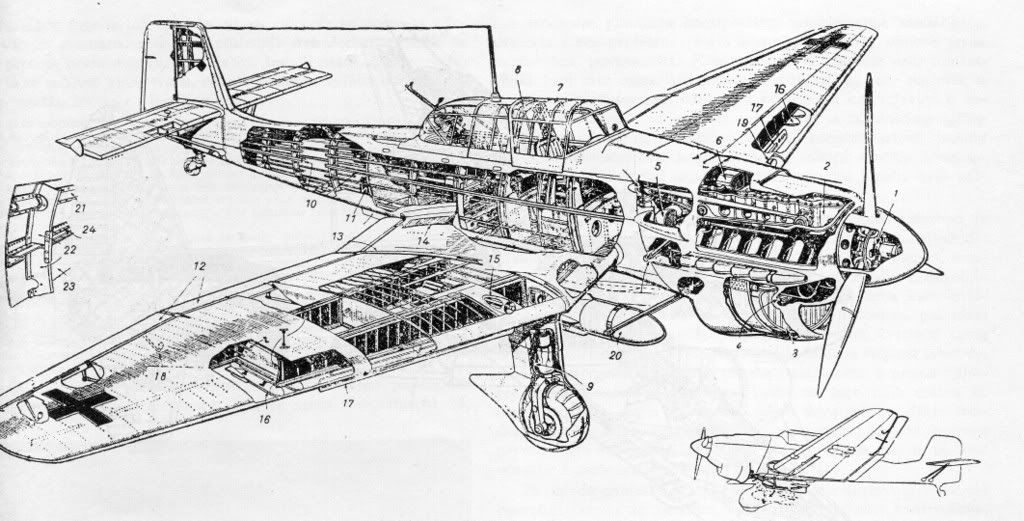
And now that famous “smiling shark” look, affiliated only with another unduly underestimated airplane – with Curtiss P-40.

Finally, here you have an original schematic description, as well as a straight shot of that notorious, but habitually misinterpreted Sturzflugautomatik (automated pull-out) device.

I think that aforementioned piece of airplane equipment deserves some additional explanations. As you know, dive-bombing always was and still is connected with the high G-forces, completely capable to generate total unconsciousness of the pilot, together with all those concomitant flight perils. Confronted with aforementioned threat German engineers have introduced back in 1937. an automated pull-out mechanism, that was installed in all Junkers 87 airplanes, which enormously facilitated the complex task of dive-bombing.

General concept was highly inventive and completely pilot-oriented one. Usually flying at normal cruising height and speed Ju 87 pilot was able to locate his target through a window in the cockpit floor. Subsequently, target was visually aimed by pilot and after that he was supposed just to decrease the throttle, to close up the radiator grille, to adjust the propeller-pitch to neutral and finally to pull upward the first (smaller one!) lever located on the upper side of the apparatus.
After that dive brakes were driven out automatically by action of the hydraulically operated mechanism, and equally without human intervention activated trim tabs on the elevator surfaces brought the machine into a plunging flight. Additionally, the control stick was limited to an lateral excursion of only 5 degree, toward preventing potentially dangerous maneuvers. However, this limitation actually was overridable by implementation of a strong muscular tractive force (approximately 30 kg), and this possibility was actually used by some renowned, physically able pilots (like Hans Ulrich Rudel) for sharp corrective in-dive maneuvers.
When the aircraft was close to the target, a green light on the altimeter panel indicated the arrival of the previously calculated bomb-release point. With reaching a pre-calculated release height the pilot was obliged just to press a button on the completely neutrally positioned control stick to release a bomb and to initiate the automatic pull-out mechanism. Apparatus was able to automatically reactivate the trim tabs, to retract diving brakes, to open the throttle, to adjust the propeller pitch on “climb”, and finally to levelize the machine. After that the pilot was obliged only to push back that previously activated lever and to retake full operational command.
And yes, I think that very soon you will be… surprised with factual incredibility of some captions, my dear Mr. Flammpanzer. Yes, I do agree with you that good old Ju 87 surely was outdated for 1944, but still Stuka, without doubt, was an outstanding plane. After all – could you imagine consequences of an aerial combat-meeting between… say… Vultee Vengeance and Bf 109 K4?
In the meantime - all the best!











